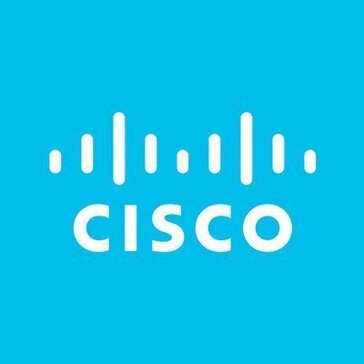Best Network Security Policy Management (NSPM) Software
Best Network Security Policy Management (NSPM) Software At A Glance
G2 takes pride in showing unbiased reviews on user satisfaction in our ratings and reports. We do not allow paid placements in any of our ratings, rankings, or reports. Learn about our scoring methodologies.
- Overview
- Pros and Cons
- User Satisfaction
- Seller Details
AlgoSec, a global cybersecurity leader, empowers organizations to secure application connectivity and cloud-native applications throughout their multi-cloud and hybrid network. Trusted by more tha
- Security Engineer
- Computer & Network Security
- Information Technology and Services
- 47% Enterprise
- 31% Mid-Market
2,451 Twitter followers
- Overview
- Pros and Cons
- User Satisfaction
- Seller Details
CloudGuard Cloud Network Security, part of the CloudGuard Cloud Native Security platform (https://www.g2.com/products/cloudguard-cnapp/reviews) , provides advanced threat prevention and automated clou
- Network Engineer
- Information Technology and Services
- Financial Services
- 51% Enterprise
- 28% Mid-Market
71,087 Twitter followers
- Overview
- User Satisfaction
- Seller Details
Firewall Analyzer is a vendor neutral log analytics and firewall rule management software that provides in-depth visibility into your organization's network security environment. Here are some of the
- Information Technology and Services
- 47% Mid-Market
- 30% Enterprise
7,677 Twitter followers
- Overview
- User Satisfaction
- Seller Details
Tufin simplifies the management of some of the largest, most complex networks in the world, that consist of thousands of firewall and network devices and emerging hybrid cloud infrastructures. Enterpr
- Computer & Network Security
- Banking
- 68% Enterprise
- 19% Mid-Market
8,139 Twitter followers
- Overview
- User Satisfaction
- Seller Details
- Computer & Network Security
- 32% Small-Business
- 32% Enterprise
14,002,464 Twitter followers
- Overview
- User Satisfaction
- Seller Details
Opinnate Network Security Policy Manager (NSPM): Simple, Effective, and Cost-Effective Network Security Opinnate’s Network Security Policy Manager (NSPM) is designed to simplify the complexities of
- Information Technology and Services
- 50% Mid-Market
- 35% Small-Business
14 Twitter followers
- Overview
- Pros and Cons
- User Satisfaction
- Seller Details
Panorama network security management provides static rules and dynamic security updates in an ever-changing threat landscape. Reduce administrator workload and improve your overall security posture wi
- Network Engineer
- Information Technology and Services
- Computer & Network Security
- 48% Enterprise
- 37% Mid-Market
126,982 Twitter followers
- Overview
- User Satisfaction
- Seller Details
Trellix ePolicy Orchestrator (ePO) is a centralized, scalable, extensible platform for security policy management and enforcement of enterprise networks and endpoints. This product provides users with
- Information Technology and Services
- Computer & Network Security
- 63% Enterprise
- 33% Mid-Market
250,269 Twitter followers
- Overview
- User Satisfaction
- Seller Details
NG Firewall simplifies network security with a single, modular, software platform that provides a browser-based, responsive and intuitive interface enabling you to quickly gain visibility into the tra
- 59% Small-Business
- 41% Mid-Market
2,476 Twitter followers
- Overview
- User Satisfaction
- Seller Details
- Information Technology and Services
- 56% Mid-Market
- 28% Small-Business
151,611 Twitter followers
- Overview
- Pros and Cons
- User Satisfaction
- Seller Details
Portnox offers cloud-native zero trust access control and cybersecurity essentials that enable agile, resource-constrained IT teams to proactively address today’s most pressing security challenges: th
- Information Technology and Services
- Computer & Network Security
- 41% Enterprise
- 39% Mid-Market
826 Twitter followers
- Overview
- Pros and Cons
- User Satisfaction
- Seller Details
Cisco DNA Center is the network management system, foundational controller, and analytics platform at the heart of Cisco’s intent-based network. Cisco DNA Center addresses the demands of digitization,
- Hospital & Health Care
- Computer & Network Security
- 37% Enterprise
- 18% Mid-Market
728,816 Twitter followers
- Overview
- User Satisfaction
- Seller Details
Cyber Security Management features centralized management control across all networks and cloud environments, increasing operational efficiency and lowering the complexity of managing your security.
- 75% Enterprise
- 25% Mid-Market
71,087 Twitter followers
- Overview
- User Satisfaction
- Seller Details
AWS Firewall Manager is a security management service that makes it easier to centrally configure and manage AWS WAF rules across your accounts and applications.
- Information Technology and Services
- Computer Software
- 51% Enterprise
- 20% Small-Business
2,229,471 Twitter followers
- Overview
- Pros and Cons
- User Satisfaction
- Seller Details
- Computer & Network Security
- 53% Enterprise
- 33% Mid-Market
23,429 Twitter followers
- Overview
- User Satisfaction
- Seller Details
Cisco Security Cloud Control (formerly Cisco Defense Orchestrator) strengthens your security posture through centralized management, real-time visibility, and AI-driven automation. It streamlines oper
- Information Technology and Services
- 62% Enterprise
- 31% Mid-Market
728,816 Twitter followers
- Overview
- Pros and Cons
- User Satisfaction
- Seller Details
SolarWinds® Observability is a full-stack observability solution that addresses the needs of modern organizations of all sizes by providing deep visibility into their hybrid ecosystems while affording
- Network Engineer
- System Administrator
- Information Technology and Services
- Hospital & Health Care
- 46% Enterprise
- 37% Mid-Market
19,827 Twitter followers
- Overview
- User Satisfaction
- Seller Details
Junos Space Security Director provides security policy management through an intuitive, centralized interface that offers enforcement across emerging and traditional risk vectors.
- 64% Enterprise
- 45% Small-Business
105,379 Twitter followers
- Overview
- Pros and Cons
- User Satisfaction
- Seller Details
Check Point Infinity is the only fully consolidated cyber security architecture that provides unprecedented protection against Gen V mega-cyber attacks as well as future cyber threats across all netwo
- 24% Enterprise
- 21% Small-Business
71,087 Twitter followers
- Overview
- Pros and Cons
- User Satisfaction
- Seller Details
ditno is an Australian owned company delivering a unique Network Security Management Platform with centralised visibility across hybrid networks, risk analysis, real-time compliance, and application d
- 62% Enterprise
- 38% Mid-Market
172 Twitter followers
- Overview
- User Satisfaction
- Seller Details
F5 BIG-IP Advanced Firewall Manager (AFM) is a high-performance, full-proxy network security solution designed to protect networks and data centers against incoming threats that enter the network. Bui
- 53% Enterprise
- 33% Mid-Market
1,401 Twitter followers
- Overview
- User Satisfaction
- Seller Details
BlueCat Infrastructure Assurance (BCIA) is a proactive monitoring and automation solution. Think of it as a virtual DDI expert, on duty 24/7. Infrastructure Assurance provides deep visibility into Blu
- 57% Enterprise
- 29% Mid-Market
2,275 Twitter followers
- Overview
- User Satisfaction
- Seller Details
Stealthwatch is the only solution that detects threats across your private network, public clouds, and even in encrypted traffic.
- Information Technology and Services
- Computer & Network Security
- 52% Enterprise
- 33% Small-Business
728,816 Twitter followers
- Overview
- Pros and Cons
- User Satisfaction
- Seller Details
F5® BIG-IQ® Centralized Management provides an application-centric and unified point of visibility and control for F5 BIG-IP products and features. BIG-IQ Centralized Management significantly eases th
- 55% Small-Business
- 27% Enterprise
1,401 Twitter followers
- Overview
- User Satisfaction
- Seller Details
Trend Micro TippingPoint integrates with the Deep Discovery Advanced Threat Protection Solution to detect and block targeted attacks and malware through preemptive threat prevention, threat insight an
- Computer & Network Security
- Information Technology and Services
- 38% Small-Business
- 31% Enterprise
112,808 Twitter followers
- Overview
- Pros and Cons
- User Satisfaction
- Seller Details
Security Management and Multi-Domain Security Management (Provider-1) delivers more security and control by segmenting your security management into multiple virtual domains. Businesses of all sizes c
- 82% Enterprise
- 18% Small-Business
71,087 Twitter followers
- Overview
- Pros and Cons
- User Satisfaction
- Seller Details
Illumio Zero Trust Segmentation is the first platform for breach containment. Visualize all communication between workloads and devices, set granular segmentation policies to control communications,
- Computer & Network Security
- 50% Mid-Market
- 33% Enterprise
3,409 Twitter followers
- Overview
- Pros and Cons
- User Satisfaction
- Seller Details
FireMon Policy Manager is a comprehensive firewall policy management platform that helps organizations quickly adapt to change, manage risk, and achieve continuous compliance. By standardizing and
- 67% Enterprise
- 33% Mid-Market
2,454 Twitter followers
- Overview
- Pros and Cons
- User Satisfaction
- Seller Details
Network Configuration Manager is a comprehensive solution designed to empower netwaork organizations with efficient network configuration and change management capabilities. It supports a wide range o
- Information Technology and Services
- 50% Mid-Market
- 35% Enterprise
7,677 Twitter followers
- Overview
- User Satisfaction
- Seller Details
Firewalls and security groups are important in securing your cloud environment and the information stored in it, as well as preventing malicious activity from reaching your servers or users.
- 50% Enterprise
- 50% Mid-Market
709,764 Twitter followers
- Overview
- User Satisfaction
- Seller Details
"Networks get hacked, become slow & go down more often than you think. Are you using the right tool to control your network?" BhaiFi is a Global Cybersecurity startup based out of India that off
- 64% Small-Business
- 23% Mid-Market
71 Twitter followers
- Overview
- User Satisfaction
- Seller Details
FireMon Asset Manager (formerly Lumeta) is a real-time network visibility solution that provides comprehensive, continuous asset intelligence across the enterprise. In contrast to other solutions, Ass
- 100% Mid-Market
2,454 Twitter followers
- Overview
- Pros and Cons
- User Satisfaction
- Seller Details
Zeguro offers cyber insurance and an easy-to-use cyber risk management solution, Zeguro Cyber Safety. Designed for small to midsize businesses, our Cyber Safety platform includes: cybersecurity traini
- 100% Mid-Market
210 Twitter followers
- Overview
- User Satisfaction
- Seller Details
Elisity is a leap forward in network segmentation architecture and is leading the enterprise effort to achieve Zero Trust maturity, proactively prevent security risks, and reduce network complexity. D
- Overview
- User Satisfaction
- Seller Details
Faronics is a Canadian software company based in Vancouver, providing IT management and security solutions since 1996. With a presence in over 150 countries, Faronics supports thousands of organisatio
1,467 Twitter followers
- Overview
- User Satisfaction
- Seller Details
Firesec is a Security Analysis and Orchestration platform. It is designed solve problems of these personas - CISO, Security Consultant, Security Auditor and Network Administrator. It is an automated s
2,346 Twitter followers
- Overview
- User Satisfaction
- Seller Details
IP Fabric is a vendor-neutral network assurance platform that automates the holistic discovery, verification, visualization, and documentation of large-scale enterprise networks, reducing the associat
932 Twitter followers
- Overview
- User Satisfaction
- Seller Details
NP-View performs a comprehensive analysis of firewall, router, and switch configurations to determine connectivity and identify any deviation from security policies, standards, and best-practices. The
- Overview
- User Satisfaction
- Seller Details
A Key Part of Fortra (the new face of HelpSystems) Powertech is proud to be part of Fortra’s comprehensive cybersecurity portfolio. Fortra simplifies today’s complex cybersecurity landscape by bringin
2,461 Twitter followers
- Overview
- User Satisfaction
- Seller Details
Providing comprehensive security, encryption and compliance management solution for IBM i environments.
3,981 Twitter followers
- Overview
- User Satisfaction
- Seller Details
Deploy and manage all your firewalls, connected switches and access points, from one easy-to-use dashboard.
29,682 Twitter followers
- Overview
- User Satisfaction
- Seller Details
Stormshield Management Center is a software that helps to monitor and secure interconnections between several hundred sites.
5,659 Twitter followers
Learn More About Network Security Policy Management (NSPM) Software
What is Network Security Policy Management (NSPM) Software?
Network security policy management (NSPM) software helps companies streamline the orchestration of security policies across hybrid networks. It helps companies stay up-to-date on their security policies and protects them from evolving cyber attack threats.
As the network of IT systems grows in an organization, so does the cybersecurity challenge. New firewall rules and cloud security policies get added frequently. The size and complexity make it difficult for people to understand and keep track of these policies. There is also a possibility of obsolete policies staying in the system as administrators are not sure what the repercussions of removing them might be.
NSPM provides an array of tools to enforce security policies in the network. NSPM software manages policy changes by creating an audit log of changes and updates. It also helps automate and manage firewall configurations and network configurations.
NSPM alerts administrators of any policy changes, helps them remove obsolete security policies, and maintains compliance standards.
What are the Common Features of Network Security Policy Management (NSPM) Software?
The following are some core features in NSPM software that provides a management system for security policies across the network:
Policy optimization: NSPM software identifies redundant processes and policies and automates changes to reduce unnecessary policy enforcement.
Auditing: The software allows for deep examination into apps, routers, network-connected devices,cloud-based networks, their policies, and protocols. This helps organizations stay compliant and up to date on security policies.
Automated security configuration management: Network security policy management tools can help monitor configuration rule sets and policy enforcement measures and document changes to maintain compliance.
Automation of policy changes: It can be tedious to manually implement policy changes across the network. NSPM completely automates end-to-end policy enforcement workflows across hybrid- and multi-cloud environments.
Document policy changes: NSPM creates logs of any change in policies. This is extremely helpful in creating audit reports.
Dashboard: NSPM software provides a single dashboard from where firewall and security configuration management can be orchestrated. This provides insights at multiple levels of granularity.
Alerting: The tool can send automated alerts to stakeholders when a policy or setting is changed.
Compliance monitoring: NSPM monitors configuration rule sets and policy enforcement measures and documents changes to maintain compliance.
Risk analysis: It helps manage security risk by identifying potential network security risks, vulnerabilities, and compliance impacts.
What are the Benefits of Network Security Policy Management (NSPM) Software?
Network security policy management provides the organization with a management platform for their security infrastructure policies across their networks and aids in dodging cyber threats. It also provides a host of other benefits listed below.
Assistance in policy creation: NSPM software makes policy management scalable as the business and network expand. Some NSPM software assist in policy creation and orchestration across the network.
Automation: Many NSPM tools provide an automated alerting mechanism that alerts the administrators and relevant teams whenever policy changes occur. NSPM automates implementation workflows. This eases the enforcement of policies across the network.
Compliance: Each country and region has its own governance rules, which can be challenging to keep up with. Network security policy management software provides frameworks to meet data protection compliance standards.
Saves time: Keeping track of all policy changes and configurations is humanly impossible as the organization grows. Multi-vendor situations for cloud systems further complicate the network landscape. Manual management might lead to errors like missed updates and obsolete policies not being deleted. NSPM helps identify any issues for quick troubleshooting.
Visualization: NSPM software enables companies to manage security policies across their hybrid cloud environment through a single console.
Change management: Network security policy management software logs all policy updates and changes. This can help the administrators take the right security control actions. This makes it easy to create reports for data protection and security audits.
Who Uses Network Security Policy Management (NSPM) Software?
Network administrators: Network administrators use NSPM to define, update, and centrally manage network security operations for their organizations.
IT teams: IT departments use NPSM to enforce security policies and firewall configurations across their multi-cloud environments.
What are the Alternatives to Network Security Policy Management (NSPM) Software?
Following are the alternatives to the network security policy management that can replace this type of software, either partially or completely:
Network monitoring software: Network monitoring software helps detect problems with the computer network by comparing the performance against set benchmarks. This helps in quicker remediation of issues. They also establish checkpoints and measure response time, availability, consistency, reliability, and the overall traffic of a network based on real-time and historical performance data.
Network management software: This is used to manage and control IT systems by providing information on the organization of the network, its performance, and its users. Network management tools are used to administrate, provision, and control IT.
Software Related to Network Security Policy Management (NSPM) Software
Related solutions that can be used together with network security policy management include:
Network automation software: Network automation software automates the process of managing, configuring, testing, deploying, and operating endpoints and physical and virtual devices within a network. It increases productivity by preventing human errors and reducing operating expenses associated with manual network management. Network automation tools are used by IT teams for network resource provisioning, network configuration, network audits, and network device mapping, among others.
Microsegmentation software: Microsegmentation software helps segment workloads and helps individually control them through policy-driven, application-level security, reducing the attack surface. These tools isolate components of data centers and cloud workloads using network virtualization to deploy and protect them independently.
Challenges with Network Security Policy Management (NSPM) Software
Software solutions can come with their own set of challenges. Here are some challenges that users of NSPM software may encounter:
Manual changes: Though many operations are automated, not all tasks fall under that umbrella. Manual involvement is still required in many places. This reduces the impact of the software.
Configuration complexity: Configurations required for this software can be complex and lengthy. This can be tedious and confusing for administrators and increase the setup and ROI time.
Integration: Many NSPM tools do not integrate with products of all brands in the network. This can limit the scope of robust network policy management of the entire network.
How to Buy Network Security Policy Management (NSPM) Software
Requirements Gathering (RFI/RFP) for Network Security Policy Management (NSPM) Software
One important thing to consider while buying an NSPM solution is the software’s ability to integrate with all apps, endpoint devices, equipment, and technologies in the network. The software should also be able to assist with automatic policy creation and implementation.
It should also support compliance with data protection standards. The tool must provide easy log management as well as alerting and visualization capabilities to keep track of policy changes. It is an added advantage if the vendor offers a free trial so that the buyer can evaluate the product before making a long-term investment. Depending on the scope of the deployment, it might be helpful to produce an RFI, a one-page list with a few bullet points describing what is needed from the software.
Compare Network Security Policy Management (NSPM) Software Products
Create a long list
Buyers need to identify features that they need from their NSPM tools and start with a large pool of NSPM vendors. They must then evaluate the pros and cons of each product.
Create a short list
Short lists help cross-reference the results of initial vendor evaluations with other buyer reviews on third-party review sites such as g2.com, which will help the buyer narrow in on a list with three to five products. From there, buyers can compare pricing and features to determine the best fit.
Conduct demos
Companies should demo all of the products on their short list. During demos, buyers should ask specific questions about the functionalities they care about most; for example, one might ask for a demo of how the tool would behave when it detects a policy change.
Selection of Network Security Policy Management (NSPM) Software
Choose a selection team
Regardless of a company’s size, involving the most relevant personnel is crucial during the software selection process. The team should include relevant company stakeholders who can use the software, scrutinize it, and check whether it will meet the organization’s requirements. The individuals responsible for the day-to-day use of NSPM software must be a part of the selection team. IT administrators, cybersecurity teams, and decision makers could be the primary personas included in the group.
Negotiation
The cost of the software varies based on the features offered, the number of instances, and users. Buyers looking to trim costs should try to negotiate down to the specific functions that matter to them to get the best price. More often than not, the price and specifications mentioned on the vendor’s pricing page can be negotiated. Negotiation on implementation, support, and other professional services are also crucial. Buyers should ensure they’ll receive adequate support to get the product up and running.
Final decision
Before deciding to purchase the software, testing it for a short period is advisable. The day-to-day users of the software are the best individuals to perform this test. They can use and analyze the software product's capabilities and offer valuable feedback. In most cases, software service providers offer a short-term product trial. If the selection team is satisfied with what the software offers, buyers can proceed with the purchase or contracting process.
What Does Network Security Policy Management (NSPM) Software Cost?
The cost of NSPM software typically depends on the number of instances, users, and features required. Some even offer free trial periods to start with. Buyers can reduce costs by evaluating the company's most required features and investing in only them instead of splurging on the all-inclusive versions.




























